After shooting more than 40 inventors for my Inventor Portrait Project, I was trying to think out of the box. What categories of inventors did I not have yet? I thought it might be interesting to get a military inventor in the project.
A few Google searches later, I found SPAWAR, the Space & Naval Warfare Systems Command located in San Diego1. Their website showed a few inventions that caught my eye, like a seawater antenna that shot water straight up into the air to act as an antenna in situations when a physical antenna might not be practical. It relied on the magnetic induction properties of salt water to work. The height of the fountain determined the frequency, all the way up to 80 feet. That seemed interesting and very visual.
So I sent an email to SPAWAR’s Public Affairs Office. I explained my project, and expressed interest in the seawater antenna. I told them about some of the high-profile inventors I’d already profiled, and that I would be posting the video online and possibly making a book about the inventors.
To my joy and surprise, they were very interested in helping me! But instead of the seawater antenna, they had a few other things they preferred to show off, depending on who might be available. That was fine with me.
And that’s how I ended up on the USS Cape St George profiling Randall Olsen as the 43rd inventor in my project. He developed a directional antenna that would allow ships to communicate from miles away without their radio signals spreading out in every direction. The technology for this type of communication already existed, but at a cost of millions of dollars. His antennas only cost a few thousand.
But First… Lunch
Before heading to the ship, I first went to SPAWAR headquarters to see Randall’s lab. I was greeting by a member of the Public Affairs Office who would be my escort for the day. I was introduced to Randall and a bunch of people I don’t remember. They had prepared a box lunch meeting for all of us in the Command Center.
They told me that they were in the process of building a new Command Center that was more like what you might see in a movie. It was being designed by former Disney Imagineers to make sure it looked awesome.
Sitting there eating my box lunch, surrounded by very serious Navy people, it all felt very surreal. How did I get here? It started with an email, and now here I was.
Then I went to Randall’s lab, the first of three locations where I would conduct my interview. He demonstrated how they test the antennas by going outside and putting them on two rolling carts and simply moving really far away from each other to simulate ships communicating over long distances. The antennas were designed to work inside of hard-shell Pelican cases, and I wasn’t allowed to see in the cases. That was a bit disappointing.
After the demo and an interview in the lab, we got in a car and drove to the ship.
The USS Cape St George is a 567-foot Ticonderoga-class cruiser. It’s a big ship. I got there and couldn’t believe they were letting me on board to film just because I asked.
Randall demonstrated how the antennas are hung on the sides of the ships to communicate with each other, and then we went to the ship’s bridge where I conducted part two of the interview.
Finally, we went to the ship’s Combat Information Center (CIC for short) for the last part of the interview. This felt like something straight out of a war movie. It was cramped and dark and had radar screens that went “ping” (okay, maybe they didn’t actually make a ping noise but they might as well have). I had brought some compact lighting to shoot with, but I didn’t even have room to set it up.
The light on Randall’s face in this photo is from the flashlight of my phone held just out of frame:
But let me tell you the most unbelievable thing of all. You see those people in the background? They aren’t doing real work. They are just pretending. When we arrived in the CIC, my escort told me that he arranged for them all to be there just for me. They were my extras. When we were done shooting, they would go back to whatever they were supposed to be doing.
I was just looking at some b-roll and my directions to one guy were literally: “The more knobs you can fiddle with for this shot, the better. You got any knobs you can fiddle with?”
Meanwhile, all I could think is: How did I find myself in the belly of a Naval battleship telling a half dozen sailors what to do? How did I get an all-day escort from the Navy? Don’t all these people have more important things to do than hang out with me for a day?
I’ve been on shoots that have taken me to some unbelievable places. I’ve been to celebrity homes, private islands, shipyards, Senators’ offices, fashion shows, etc. But usually I was working on assignment for someone else whose clout opened those doors. This was a major get for me as an individual producer early in my video career, and it made me realize that so much is possible if you just ask.
Here’s the final video.
And that’s it for another newsletter!
You know, speaking of things you can get just by asking, have I asked you recently to recommend this newsletter to a friend? Share your favorite post? Or even become a paid subscriber? (Paid subscribers don’t get anything extra, but it encourages me to keep writing this thing.)
Thanks for reading as always. See you next time!
David
SPAWAR has since changed its name to NAVWAR, the Naval Information Warfare Systems Command. But I’m just going to call it SPAWAR.





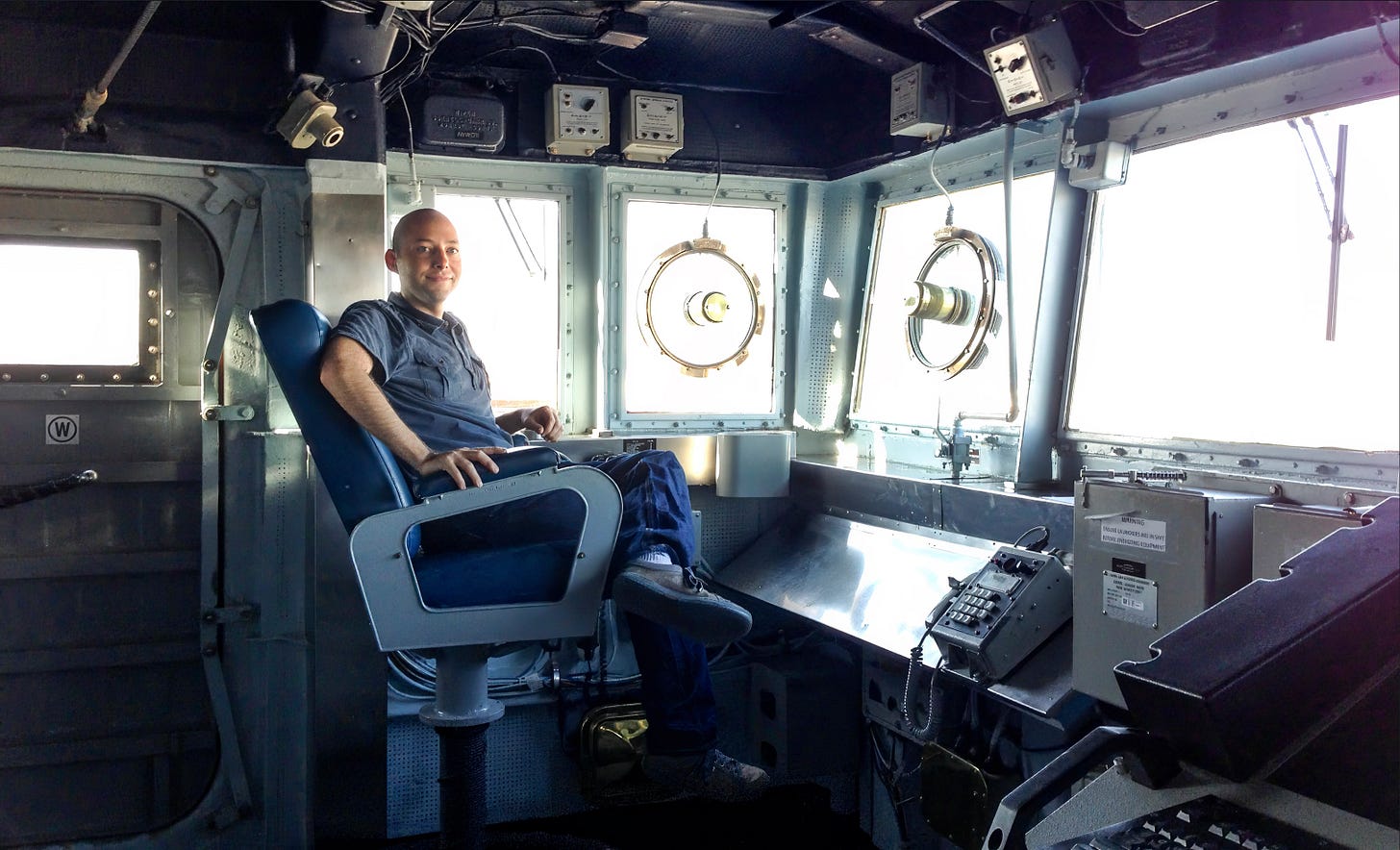
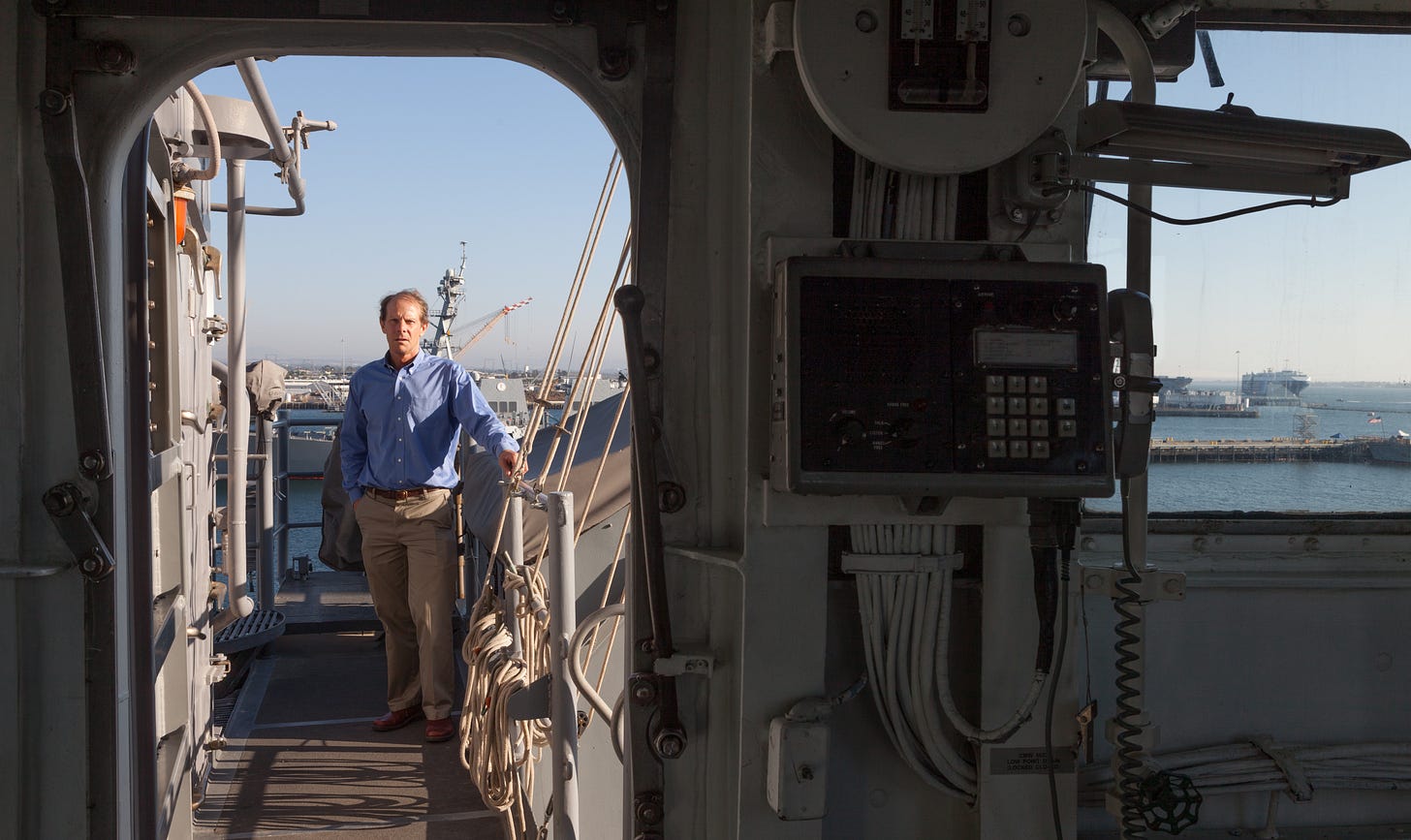


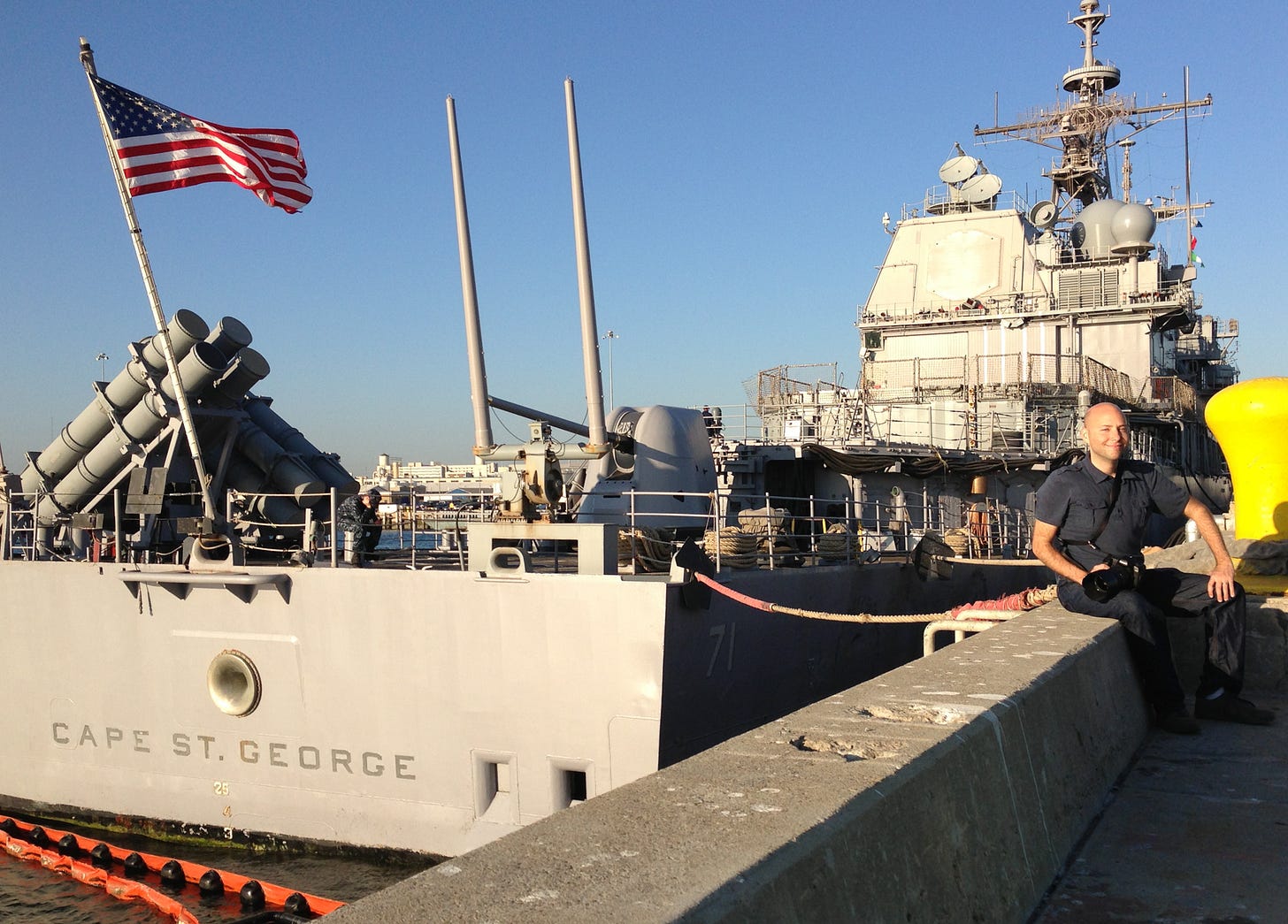
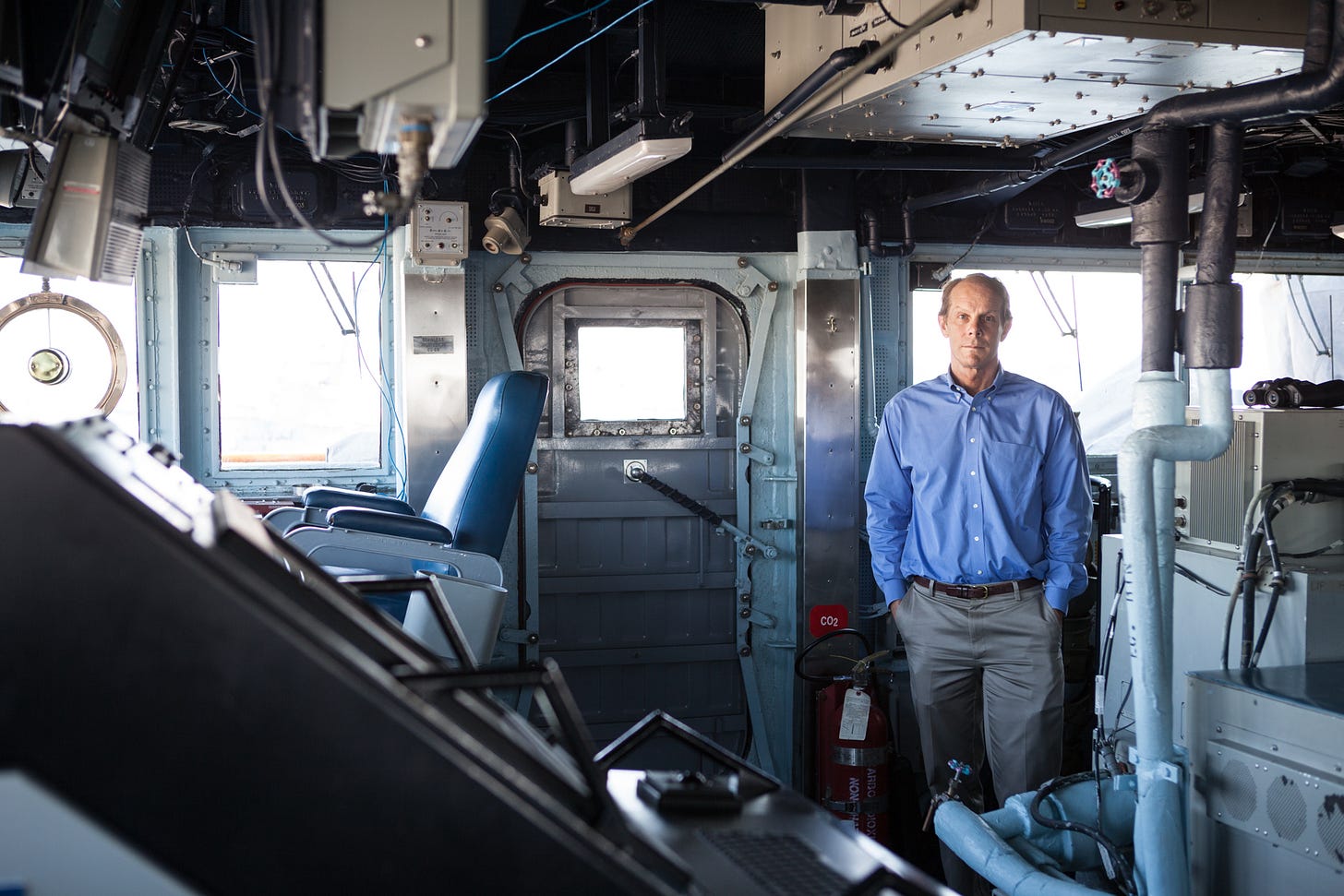

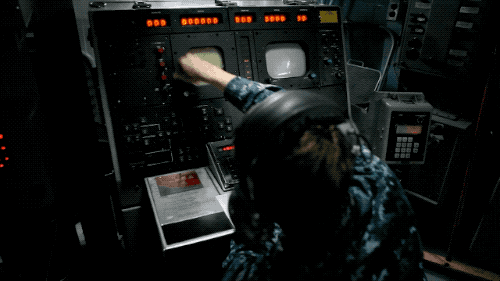

Just like how the extras were pretending to turn a bunch of knobs, they could have put a fake inside the hard-shell Pelican case. Just put in a bunch of gears, blinking lights, and microchips. Maybe a gerbil running inside a wheel too.
Very Cool!